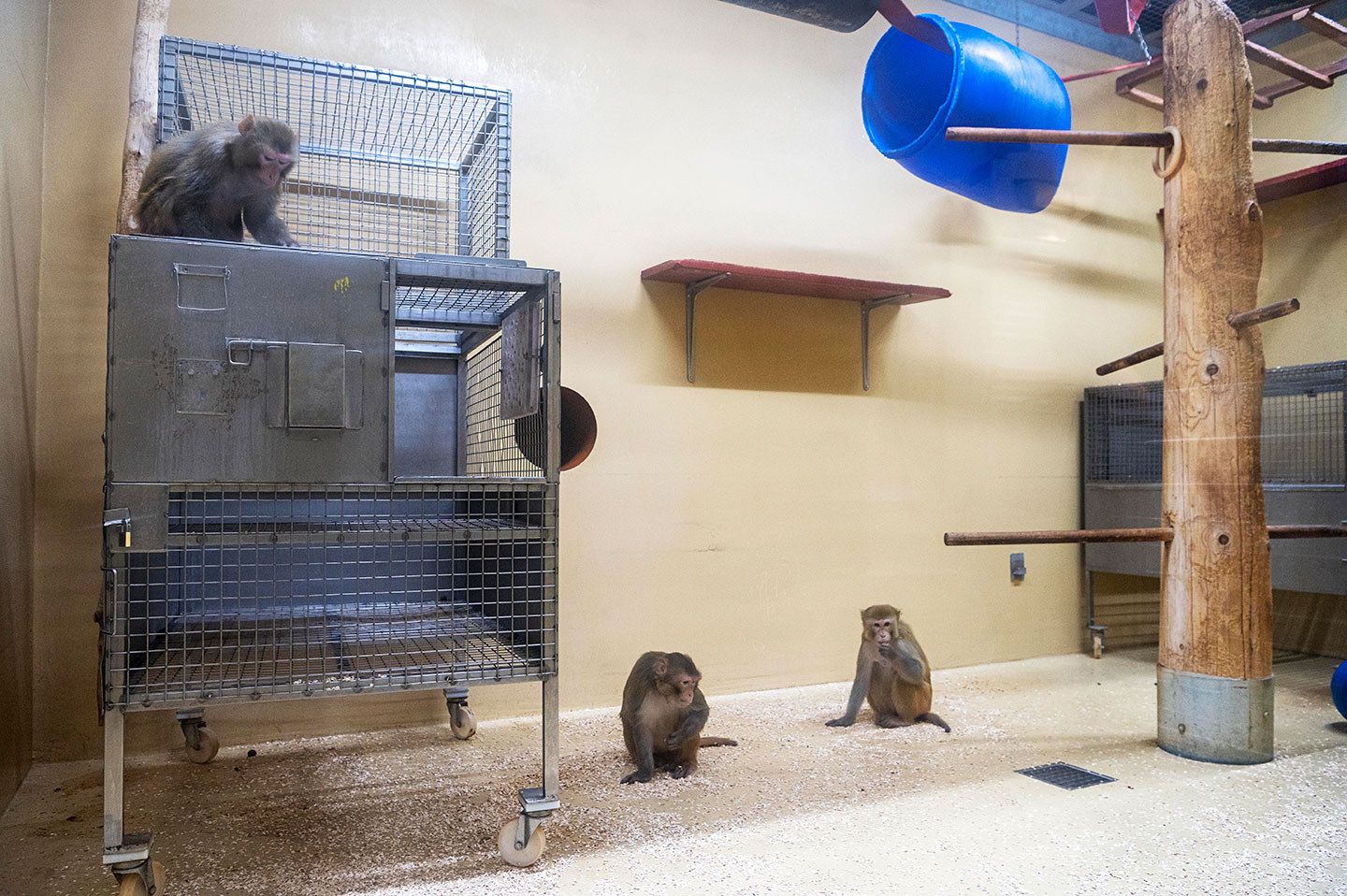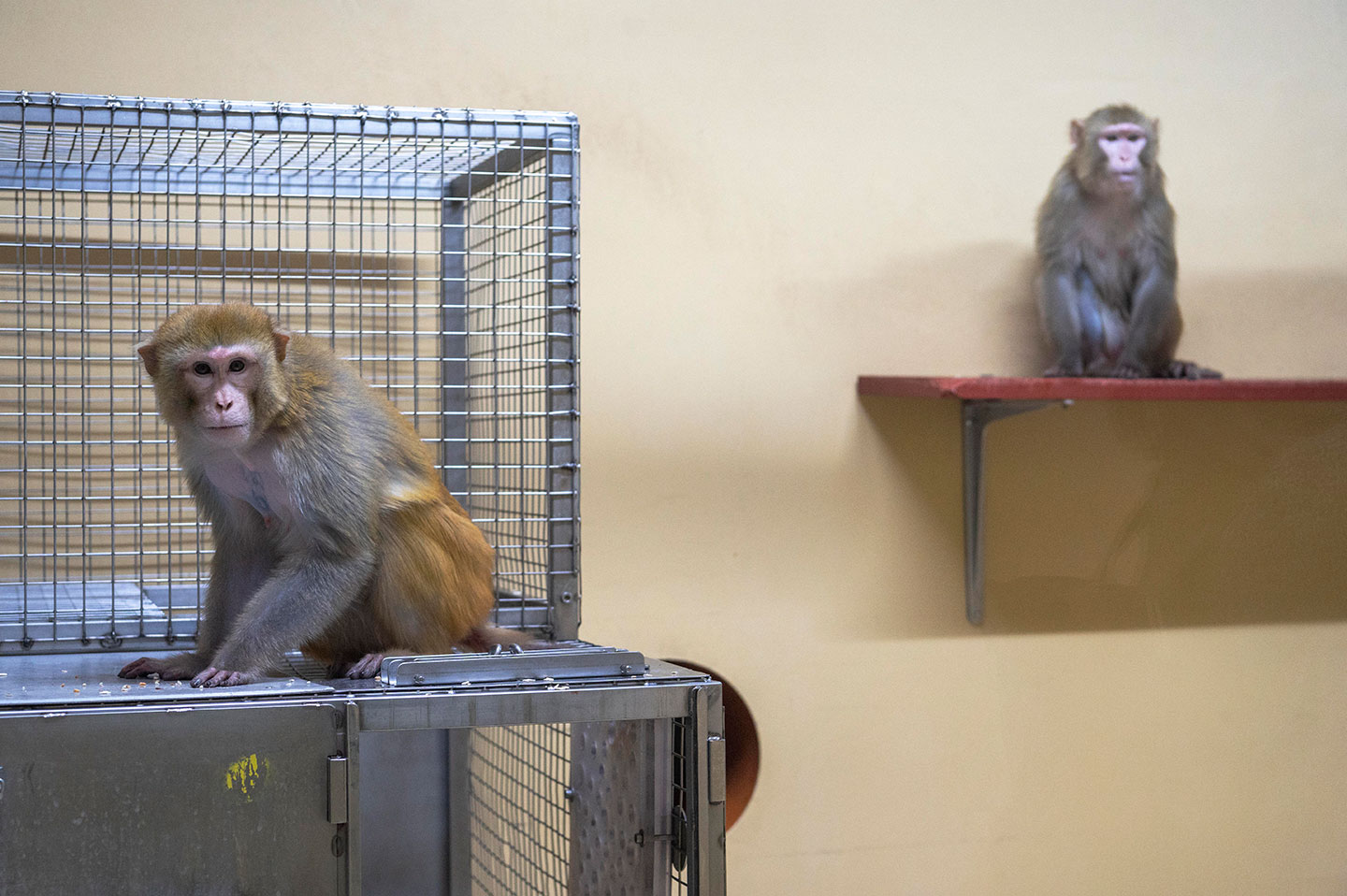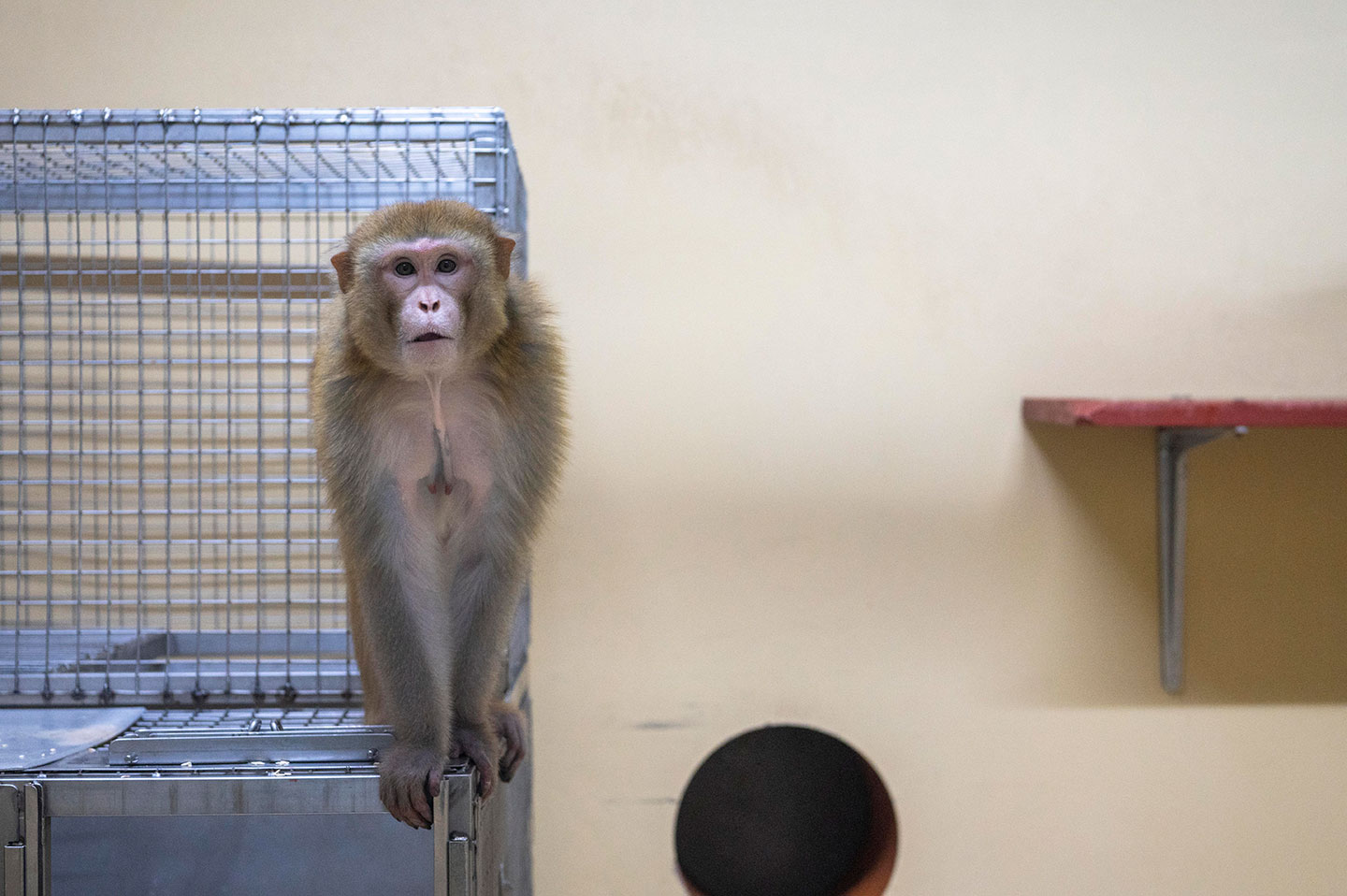Research involving NHPs
Why Non-Human Primates
Non-human primates (NHPs) are used for neuroscience, biomedical research about the brain at the University of Fribourg.
Neuroscience is the study of brain organisation and function. Although alternatives are increasingly used, most studies to date require experiments with humans or various experimental animal models in which hypotheses about the brain can be experimentally tested. NHPs are used for their proximity to humans in term of brain function and certain behaviour.
In both NHPs and humans, vision evolved as the predominant sense, implemented in a similar organisation of their visual systems. As a consequence, NHPs can precisely control their gaze to perform high-resolution, trichromatic vision. NHPs are therefore used to develop and test the effectiveness of treatments aimed at ameliorating blindness. The expansion of cortical and subcortical association areas during evolution has enabled NHPs to engage in various cognitive tasks requiring sustained attentional focusing and memory. Research studies are therefore including NHPs to test diagnostic markers and novel treatments related to neuropsychiatric conditions with abnormal cognitive function. Their similar dexterity to humans, thanks to their similarly evolved cortico-spinal tract, makes NHPs also the species of choice to develop motor prostheses, for example in spinal cord injury.
Thus, research with NHPs at Unifr contributes critically towards fundamental discoveries about the workings of the brain and for translational work aimed at improving human mental health.
SPCCR
The mission of the Swiss Non-Human Primates Competence Center for Research (SPCCR) is to promote and to inform about biomedical research with non-human primates (NHP) in Switzerland. The Competence Centre allows coordination of NHP-related activities between the Universities of Zürich and Fribourg, and provides a platform of expertise to carry out research involving NHPs.
About our monkeys
All monkeys at the University of Fribourg come from recognised and authorised European breeding centres. Current projects involve both macaca fascicularis and macaca mulatta. In our housings, there are usually 10-20 monkeys living in 5 groups. These groups are divided by room and by project. Each enclosure covers at least 45 cubic metres with a minimum height of 3 metres. Besides the interior space, each room has an exterior section that can be reached via an individual access. All rooms are equipped with platforms for climbing, wooden swings, bins filled with sawdust (for foraging), giving the animals opportunities to play and to hide. Additionally, there is a dedicated enrichment programme, which aims to maintain the macaques’ optimal mental state.



